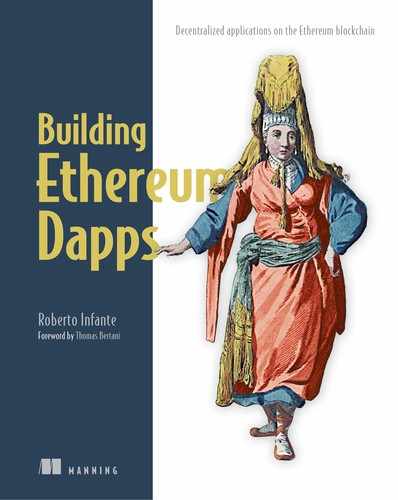Book Description
Building Ethereum Dapps teaches Dapps development on the Ethereum blockchain platform. You’ll begin with a mental model of how Dapps operate, and then dive into designing and implementing smart contracts in Ethereum’s Solidity language. You’ll explore Ethereum smart contract development tools, like Truffle and Web3, and pick up best practices for design and security. Practical exercises throughout give you valuable hands-on experience.
